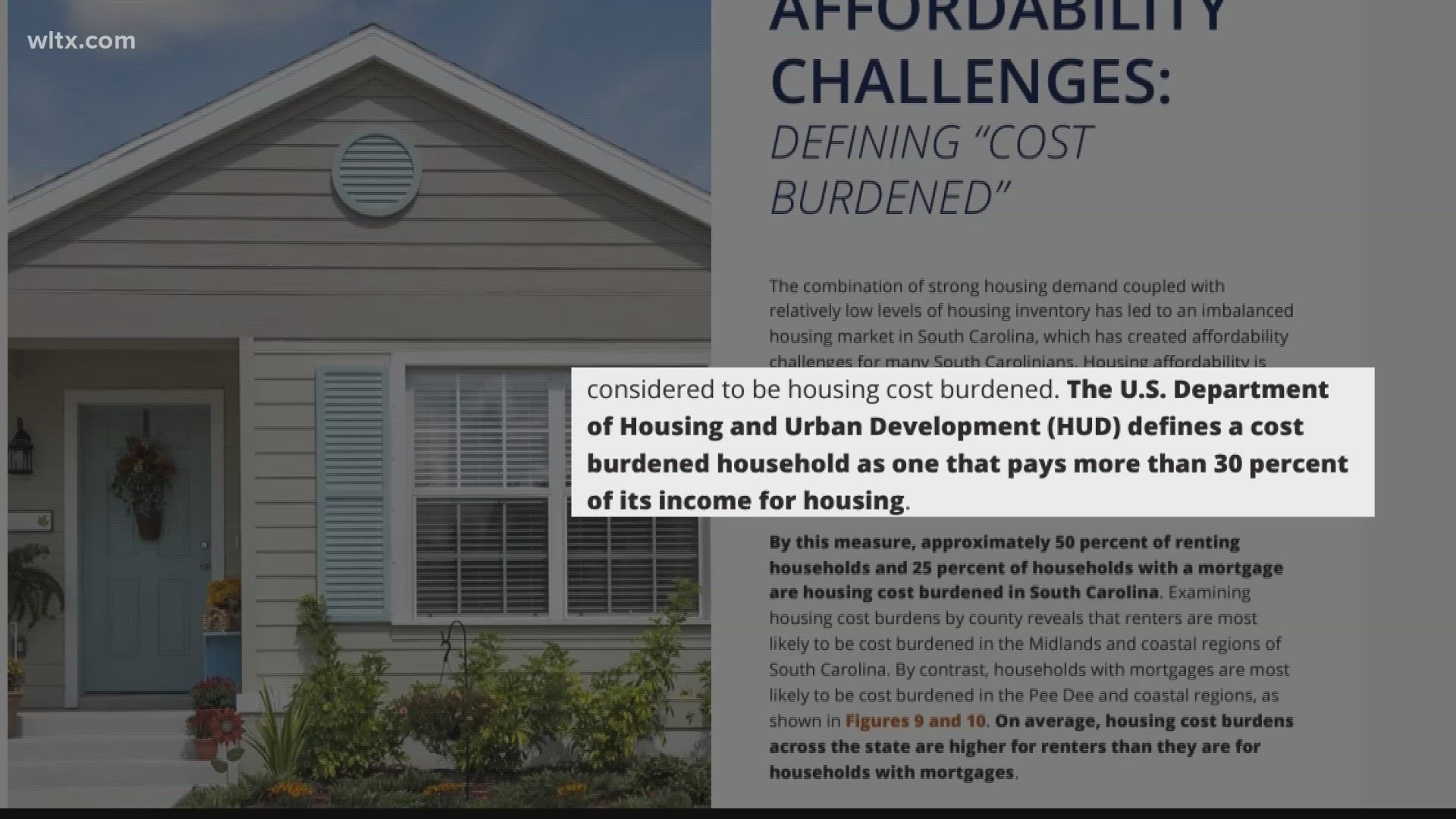COLUMBIA, S.C. — Affordable housing is hard to come by here in South Carolina — and especially here in the Midlands.
That’s according to a new study published by the University of South Carolina's Darla Moore School of Business in partnership with SC Housing.
"There are less houses on the market than we’ve ever had of course," Henrietta Gadson, a real estate associate broker with ERA Wilder Realty, explains.
Gadson has been in real estate for 10 years in Columbia. Now more than ever, Gadson says she’s seeing a shortage of houses available to buy, especially under $200,000.
"I am seeing that more buyers are coming to the market as well," Gadson shares.
This lines up with findings recently released in the 2023 Palmetto State Housing Study, which research economic Joseph Von Nessen helped conduct.
"We’ve seen high demand, relatively low supply and that’s led to affordability challenges," Von Nessen says. "The supply of housing is very low by historical standards and that has come about for several reasons. One of which is that South Carolina continues to see significant population gains and has seen steady population growth over the precious decade and on top of that, we’ve seen a period of underbuilding across the United States and in South Carolina starting in the great recession back in 2008."
The study has found that 50% of renters and 25% of home-owners with a mortgage are housing-cost burdened, which means they spend more than 30% of their monthly income on housing.
This is determined by the U.S. Department of Housing and Urban Development, according to Von Nessen.
"Normally when you get about 30% that's when you get into problems with other bills," Von Nessen says. "So households that are paying significantly more than 30% toward housing means that they don’t have that money to spend on medication or groceries or other necessities of life."
The study shows this is a trend across the state — but especially in the Midlands.
"Columbia when compared to South Carolina tends to see more households that are housing cost burdened relative to many other regions of the state and one of the reasons for that is that we haven’t seen as much economic growth in Columbia especially compared to regions like Charleston and Greenville over the past decade," Von Nessen explains. "We see a lot of stability here. We don’t see as much growth during economic expansions we don’t see as much pullback during economic recession."
"The affordable housing crisis is a very real situation," Columbia Housing Authority CEO Yvonda Bean says.
Columbia Housing provides housing to people with low to moderate income. She says there are more than 3,000 people on the waiting list.
"We’re in the midst of an affordable housing crisis like we have not seen before, so yes we have a waiting list," Bean says. "We cant create new affordable housing fast enough, this community can’t create new affordable housing fast enough."
It’s not just people with low-income who are facing issues with getting affordable housing, Von Nessen says. Phase one of the survey focused on getting data and phase two collected feedback on residents’ current living situation.
It found that the majority of residents are homeowners with a mortgage payment.
According to the report, these affordability issues affect both renters and owners who have low income and middle income as more people move to the southeast.
"South Carolina is in the heart of the southeast so this population growth that we’re seeing is going to continue going forward, it’s not going to change," Von Nessen says. "So we have to address that."
The third and final phase of the study is underway where SC Housing is working to provide recommendations to state lawmakers on how best to address the problem.

